The power is down also in the morning, so I must skip the shower again. The whole city being deprived of electricity also means that no internet café will be open. I can then only walk around and visit the shops.
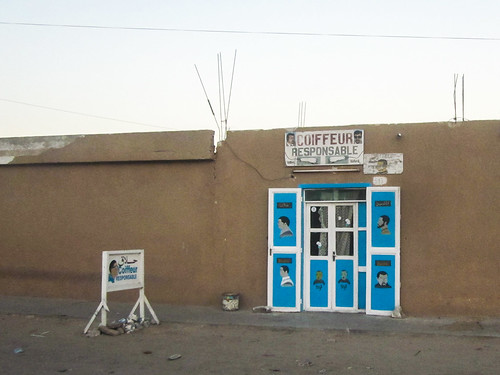
The city is very unattractive, the main road looking like a souk alley and the other streets looking like a township. Sand is everywhere on the streets and in buildings, goats eat trash that is spilled all over and the plastic bags are flying over the small houses. The first shop I visit has chocolate, but all Spanish second-class brands. Nothing much imported, albeit those useless Pringles crisps that really sell everywhere. I get out with good fake pepitos and can get on my tasks for the day: money exchange, a local SIM card and a better tire than my spare Chinese one.
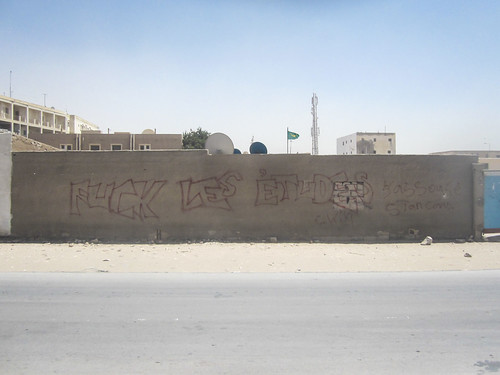
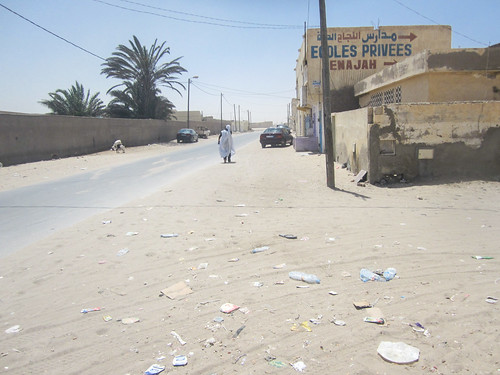
The exchange rates in town are, for the dirham, no better than at the (end of the) border. I have to bargain to get the best rate I had there. For the local SIM card, there is an offer for less than 2 € including the card, some minutes + sms + 30 days of internet limited at 20 MB/day. And the 3G internet works very fast here. The operator even recognizes my Nokia N900 for the access point settings and it works within a minute, with much more efficient than any operator in Europe. After Google stopped the access to my account, asking to validate this suspicious connection via a mobile device from Mauritania, everything works well. The only drawback is that whenever I get the phone out of my pocket for seconds, the screen gets covered in sand dust. The whole atmosphere is loaded with sand dust.
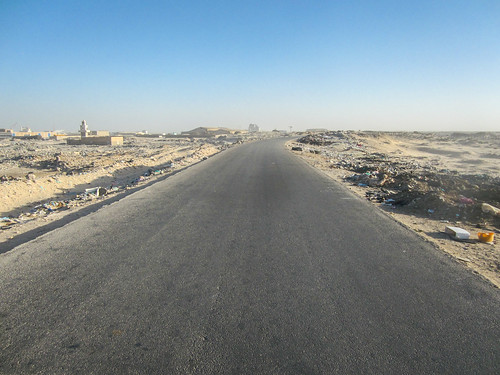
I walk in the industrial area around the Port Autonome. When the road is bordered by sand and trash only, it could be the Earth after a meteorite. Beside the iron ore export, Nouadhibou has other assets, including fishing, for a population of 100’000. The city yet looks very disadvantaged for a 2nd national economic center. The wealthy men are wrapped in their blue and white boubous, all looking alike, and the Chinese are driving 4×4. I hadn’t seen any Chinese in Morocco, and now they are many. They have a contract with the government to exploit the ocean for fishing, as well as for renovating the port. That explains the several Chinese restaurants in town, the couple of shops, the illegal prostitution, and the totality of shop goods that seem to be made in China.
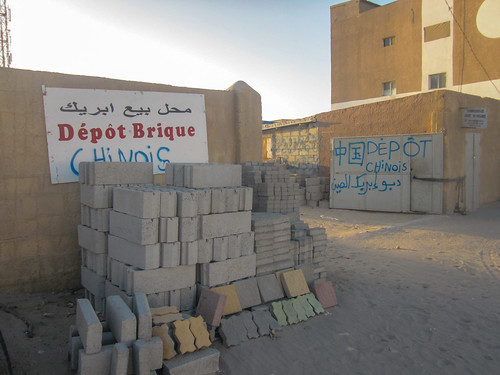
Back into the tiny town center, where French is used a lot in the shops as the business language between Mauritanians and the large Senegalese population, where I finally find the supermarket “for foreigners”. It has fridges for diaries and clean shelves like in a normal supermarket, and sells incredible things: Milka chocolate, the Chips Ahoy with big chocolate chunks, and even Spanish cheese. But they are priced like nobody would buy them (repectively 2.5 €, 5 € for the small packet, 7.5 € for 500 g), when it is possible to have a dish at a restaurant under 1 €.
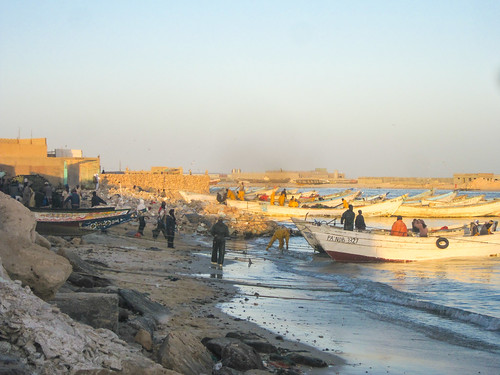


On the good side, the breads are not like the Moroccan round bread. All shops sell baguettes for 0.25 €, and they all taste very good (for sure much better than the Spanish bread). When the night comes and the electricity cuts, shopping in the dark, lit with a cellphone, is not the best option. I finally find bicycle tires in an everything-boutique, selling whatever the Chinese can manufacture in plastic. I only have 2 options, a Chinese and an Indian tire, no better than my spare 60 dh one from Dakhla. There are almost no bicycles/motorcycles in town, probably since the sand is easily winning over the 2-wheelers, so I should already be happy to have 26” wheels taking the few tires available.
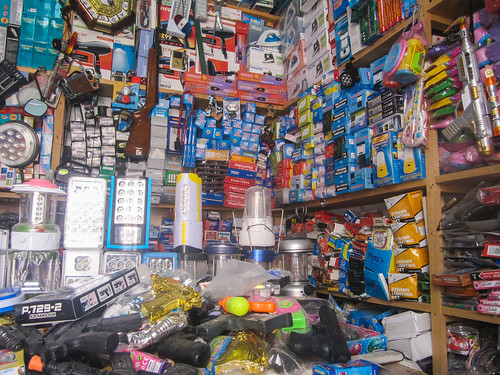
I have seen so far more France 24 than Al Jazeera on the televisions here, where nobody finds wrong to have hundreds of international TV channels and a fast 3G network coupled with daily shortages of electricity. The wind is so strong and constant a wind farm by the town would be just right.
For the first time since Spain too, I see women working in restaurants. In Morocco, I haven’t seen any waitress across the whole country. There, every job with customers is done by men. Even sweeping the floor of cafés. The entire shops, hairdressers, cafés … everything is run exclusively by men. Here, many of those businesses are run by Senegalese women.
It seems I am the only tourist in town. I see a couple of Spanish, here for work, but no other European. It’s a bit embarrassing when chatting with people, if I am asked how long I am staying and which route I take and when, because even if the main axis Nouadhibou-Nouakchott is secured, it’s not the safest place to go for a bicycle ride. The kidnappings and the war in Mali have completely destroyed the tourism industry here. There are no customers for the guides and souvenirs shops. It is a bit chill in the evenings and a jacket is not too much. I thought alcohol was banned in the whole République Islamique de Mauritanie, but it is apparently tolerated since there is a Spanish-run discoteca in town serving it. That’s not for me anyway and my main concern is the bike broken parts.
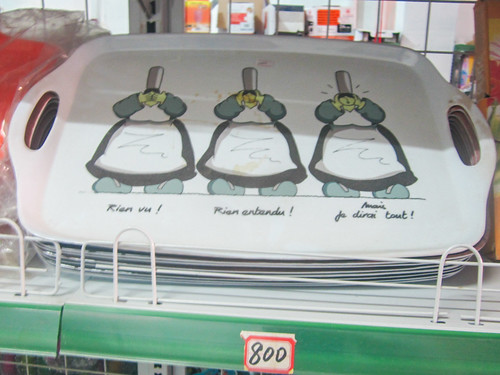
The next day, I change the broken spoke and mount the Chinese tire in replacement of the worn Schwalbe one. It’s my first time doing it, and albeit Nouadhibou is not the right place for trying to apply theory, it works well. My room is transformed into a workshop (it’s not the first time) but it’s so much better to work without the permanent wind and sand flying around. I take the opportunity to make a full cleaning, there is no better option to spend a day with a bike than with a toothbrush and needle (apart from riding it of course). I am done when the room is saturated with lubricant vapors and am glad the electricity lasted during the day today.
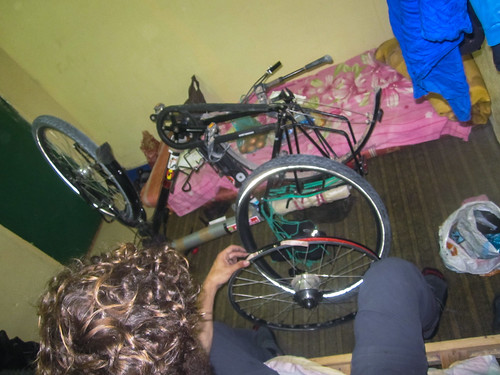
I realize also that I was carrying a Schrader-valve spare tube, which is useless as my rim can only take Presta-valves. Good that I didn’t have any puncture on the road. After a little diesel bath for the chain, I am satisfied and relieved when I mount everything back, since everything fits and looks like a new bike. But at the last turn of the key, I break the rear wheel skewer and am put in the misery of having to find a spare here.
In the next morning, I visit the only few shops selling bike parts, all Chinese, where it seems the shopkeepers don’t know what it could be useful for. I find a quick-release skewer for 3 € that I am taking for an immediate trial. Back to the auberge and a little ride around, it seems to work. So I am getting another skewer, the last one, as well as another tire, to make sure I have a spare for each Chinese part on my bike. I make the price drop by exchanging my unusable Schrader valve. I bought it in France and it’s made in Europe (Czech Republic, written on it), so it makes a big impression. If I had the original box proving even more the non-chineseness, I could probably sell it for more than it costs in Decathlon. And now it surely makes a impression among the other tubes of the shop, where some boxes have “Made in China” printed on one side, “Made in India” on the other side …
After catching up with the problems with wars and rebels in Africa on the TV (it will be sadly on my menu in the next countries), I make a half loaded test ride to see if the spoke, tire and skewer can confidently take the road until Dakar. I am not super happy with this now hybrid Chinese-German bike, but it has to work. After all I made 2600 km in Thailand on a Chinese cheap bike and I survived (the bike didn’t). So today I am going to Cansado, a small town in the south of Nouadhibou, a bit more towards the tip of the peninsula. The town was built by the French in the 1960’s just for the private port exporting iron ore located there. This is the final destination of the longest train.
But the main reason of my visit is the ship cemetery. It is said that more than 300 ships are wrecked in the Nouadhibou bay, because either there is no law, either it is easy to bypass it, and abandon an old garbage ship there.

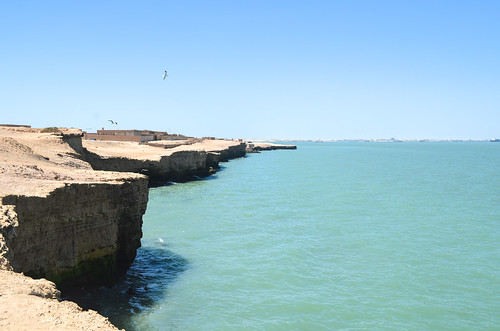
I remember I was thinking a wind farm would never be useless here, and I finally see one. But those small 275 KW turbines seems to be there only for the SNIM mining company.
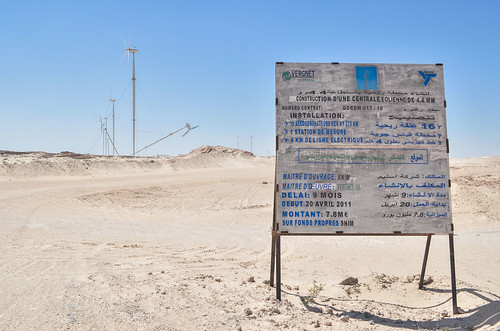
The few shipwrecks afloat I see in the bay, between Nouadhibou and Cansado, are disappointing. They are small and not so many. I resume then cycling to the very end of the peninsula, at Cap Blanc. That makes 20 km one-way from Nouadhibou. The paved road ends with the private port of the SNIM for iron ore, and the big fenced complex of SinoHydro. I must take a piste around the industrial complex to make the 8 last kilometers. The piste is sometimes sandy, sometimes rocky and unmarked, and the face of the guard at Cap Blanc makes me believe he mustn’t have seen many bicycles making it until him.
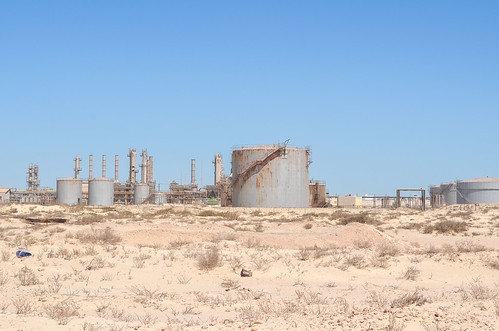

The tip of the peninsula is a protected park, called Cap Blanc / Ras Nouadhibou. It is 1200 ouguiyas for a visit. It is home to a colony of monk seals, an endangered specie with less than 500 animals in the world.
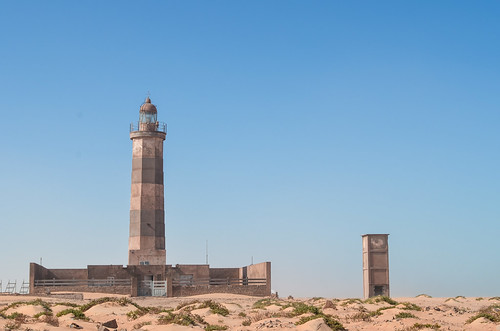
But the most interesting there is the wreck of the United Malika, a 100-meter long cargo ship laying on the sand. It is very visible on Google Maps and its shadow is clear too (by the way, WikiMapia is a wonderful tool to explore and learn about the world hidden things). The ship wrecked here in 2003 and here are pictures of it without the rust.

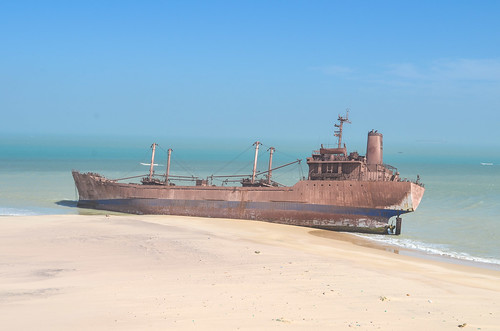

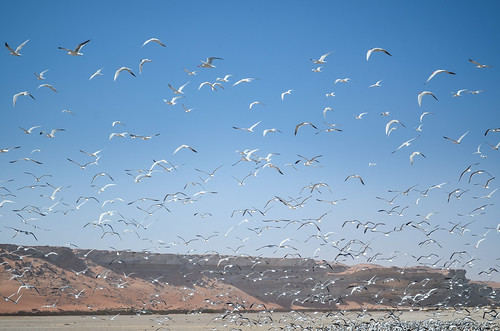
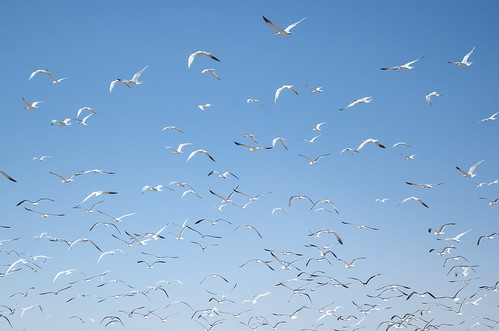
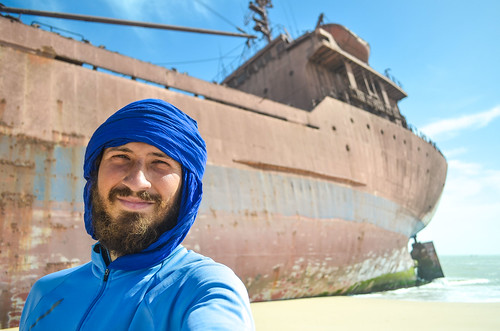


On the maps, the peninsula is vertically split between Morocco and Mauritania, Morocco occupying the outer part (the coast on the Atlantic Ocean) as an extension of the Western Sahara, Mauritania owning the inner part (Nouadhibou bay). But in practice, the whole area is administered by Mauritania, the Moroccan army being at the level of Guerguerate, 50 km to the north, where the border is mined and “horizontal”. There is nothing really belonging to Morocco here, except the tiny town of Lagouira, which is marked on the milestones since Tan-Tan, 1200 km ahead, and is known by Moroccans as the southern end of Morocco. While walking around the coast in hope of spotting those rare monk seals, I actually pass onto the Moroccan-owned land and back.
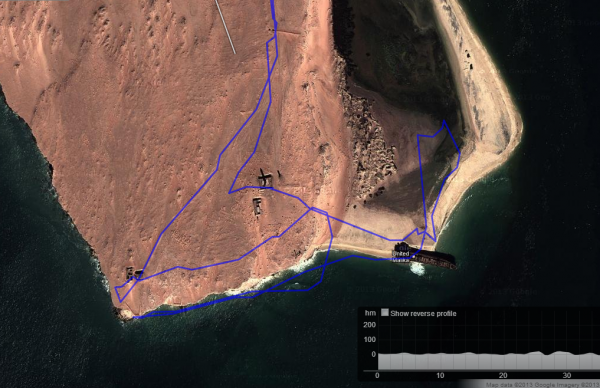
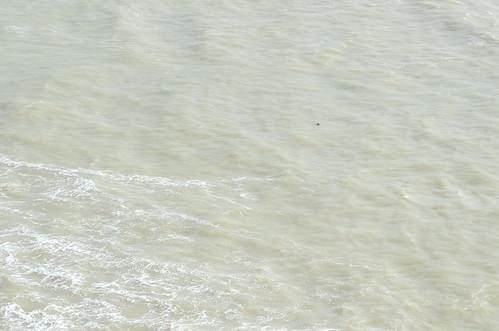
In the afternoon, the wind rises and it is like if sand was raining. Those are terrible conditions to be outside, for both my eyes and my camera. The wind in the Sahara has been always very strong (it would be a torture to cross it from south to north) but what is happening in Nouadhibou is again one level up. A ski mask would be totally appropriate.
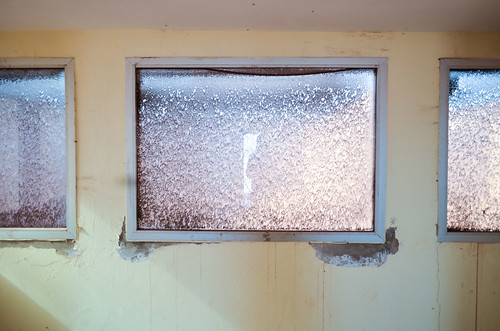
I must however get back on the piste to be home before night. That means taking the end-of-the-world piste with sand flying over me and trying to win, meter after meter, the distance against the wind. I am almost as slow as a man walking in the middle of this surreal martian scenery. As I start chatting with him, he says he is the guard for the shipwreck. A guard for a wreck? Yes, because if not guarded, robbers would come and steal the iron. As a result, he lives in a wreck, with cooking facilities, radio and TV. Very cool, but probably less cool if it has been already 10 years …
The robbers were also stealing the iron ore from the SNIM before they put a fence all around their territory. That’s a big complex to fence, because it includes a reversal loop for the 2-3 km long train. The guard tells me something I had heard before already, that all the money of the iron ore (as well as the political power of the country) goes out to the Whites (meaning the Arabic Mauritanians) and leaves the Blacks (those who speak Hassani, the local Arabic, and even more those who don’t) with nothing.
Getting back to the paved road, and then another 10 km until Nouadhibou, takes me ages and much effort, but I am in a good mood for knowing now that my Chinese parts survived 16 km of bad piste. It should be OK then to cross Mauritania on the asphalt until Dakar.
I make a last stop to visit the French gun towers built here under the French rule as a protection against the Spanish (who controlled Western Sahara). They are very cool and includes long tunnels I would have explored if I had a stronger light.


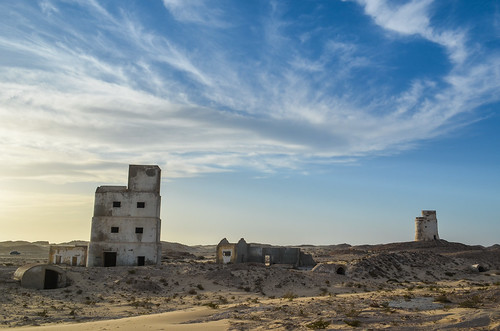
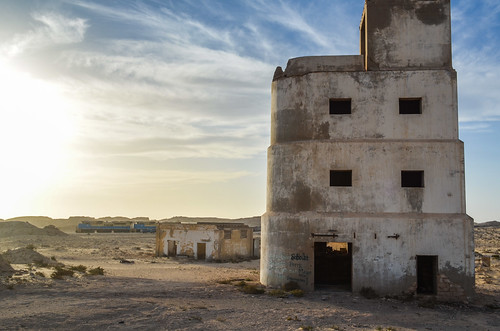
At the end of the day, my stomach is crying for having been cheated on with this long and tough expedition instead of a short test ride. A cold coca-cola, face sand removal and city power cut conclude it.
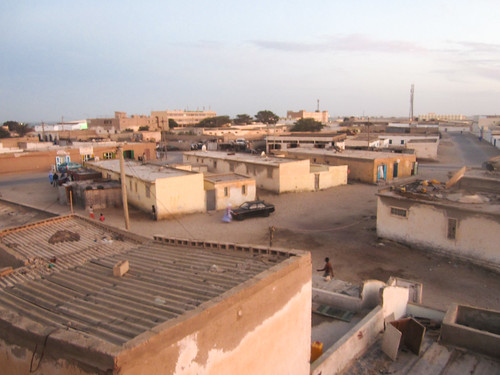







Bonjour Jb bravo pour ton photo reportage qui est toujours intéressant.
Bonne continuation.
Hey JB!
Tellement content de pouvoir lire ça!
J’ai pas la TV chez moi, mais j’imagine que même Thalassa ne m’aurait pas offert un aussi bon reportage!
Tu écris tout cela chaque jour? Je viens de découvrir le blog, je vais m’empresser de dévorer la première partie.
T’a pas besoin de TV si t’a internet!
Par contre moi je prends pas de photos sous l’eau comme thalassa … enfin pas volontairement.
J’ecris un peu chaque soir, et je compile quand je me repose qq jours.